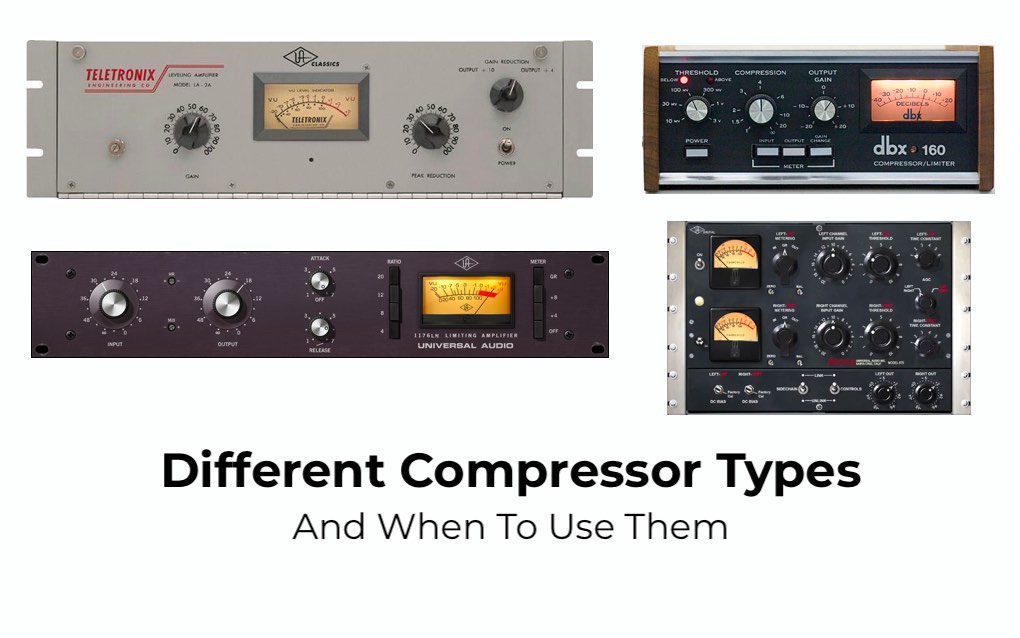- in Production by Bobby Owsinski
Here’s When To Use The Different Types Of Compressors
There are a number of different types of compressors that every engineer is familiar with, but there’s not a lot of information available about the differences between them and what they’re good at. Most compressor plugins today are based on the four different electronic building blocks that could be used to build a compressor back in the analog hardware days. Here’s a brief look at their characteristics, and what we can do with them.

Optical Style (like the LA-2A)
A light bulb and a photocell were used as the main components of the compression circuit. The time lag between the bulb and the photocell gave it a distinctive attack and release time. It has a very slow attack and release, so its best used when large transients aren’t present (like vocals) where it can work rather transparently, tightening up track without being noticed. Adds warmth. Limitations: Won’t control transients, pumps with low end content.
FET Style (like the 1176)
A Field Effect Transistor (FET) was used to vary the gain in the old analog hardware version instead of a light bulb, which had a much quicker response than the optical circuit. This type has a very fast attack and release with lots of control, but can be rather agressive sounding. It’s best used for punch and snap, but adds the most color of the four types. Very warm and rich sounding, but won’t work on the mix buss. Limitation: Not transparent.
VCA Style (like the dbx 160 or SSL buss compressor)
A Voltage Controlled Amplifier (VCA) circuit was a product of ‘80s technology and had both excellent response time and much more control over the various compression parameters. This compressor type is aggressive sounding with extreme settings and extended parameter functions. Although it works on the peaks of the program, try using it when the transients are already controlled (like the mix buss). The VCA-style compress is excellent for adding punch to drums and buss compression. Limitations: Doesn’t smooth out volume. Can be thin sounding.
Vari-Gain Style (like the Fairchild 670 or Manley Vari-Mu)
The Vari-Gain compressors are sort of a catch-all category because there are other ways to achieve compression besides the first three. The vari-gain style takes time to react, which adds a “glue” to the mix (like the mix buss or subgroup). It’s unique in that the compression ratio increases as the gain reduction increases. As a result, the louder the transient, the harder it’s compressed. Good for a mix buss or to add warmth and fatness. Limitations: Slow attack and release. Won’t solve dynamic issues or increase the punch.
Non-Emulation Digital Compressors
While it’s great to make a compressor plugin based on a previous hardware model, today’s digital compressors can do so much more. Almost every developer now has a compressor that goes way beyond what a hardware emulation can do and that results in parameters and sound that never could have been achieved in the old hardware days. Limitations: While some in this category can provide hardware emulation, not many are particularly good at it, which is okay since we have many great compressor emulation plugins already.
As you would expect, each of the above has a different sound and different compression characteristics, which is the reason why the settings that worked well on one compressor type won’t necessarily translate to another. The good thing about living in a digital world is that all of the different hardware compressor types have been duplicated by software plugins, so it’s a lot easier (not to mention cheaper) to make an instant comparison on a track and decide which works better in a particular situation.
You can learn more about the basics of mixing with my Mixing Primer Course or my other courses at bobbyowsinskicourses.com.

